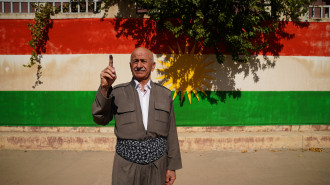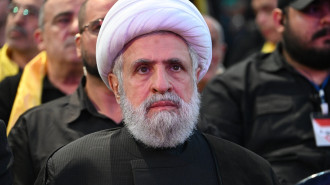
Explained: The shocking scale of Israel's May bombardment campaign in Gaza

Israel's 11-day bombing assault against Gaza this May killed between 4 and 14 times the number of civilians its airstrikes in Syria have in eight years, according to a report released on Thursday.
London-based conflict monitor Airwars revealed that 151–192 civilians were likely killed by Israeli bombing in Gaza from 10 May to 2am on 21 May, when a ceasefire was implemented, while 14–40 people have likely perished in Syria from 2013 onwards.
The NGO also found the number of airstrike deaths seen in specific areas of Gaza was linked with their population density, a finding likely to cause alarm given the Strip is among the most densely populated places on Earth.
Airwars director and co-founder Chris Woods, 55, said: "It's the strategy [the Israeli army has] chosen to apply to Syria consistently over many years versus the strategy they're applying to Gaza with very different outcomes for civilians."
He noted that the Israeli army has almost completely avoided carrying out heavy urban bombing in Syria, explaining that other foreign forces have often seen high numbers of civilian casualties using this tactic there.
"This assumption that IDF actions will inevitably lead to high civilian deaths and injuries doesn't actually stand up when you look at other IDF campaigns," Woods added, using an acronym for Israel Defence Forces to refer to the Israeli army.
"And that then raises questions about, 'So why does it have to be this way for Gaza?'"
While Israel was pounding Gaza with missiles in May, Hamas and other militants fired rockets from the besieged enclave into the Jewish state, directly killing 10 civilians there, according to Airwars' report.
Despite Tel Aviv's battle being with these groups, Airwars was unable to identify any Gaza militants having been hurt in over 70 percent of reported cases of civilians being killed or wounded in May.
Woods said: "The very high proportion of strikes in Gaza where we could find no associated militant targets are the ones that have us particularly worried."
He noted that, overall, about eight percent of Israel's 1,500 declared airstrikes in Gaza that month had civilian harm claims linked to them.
"That's a high proportion. And that's a worrying proportion," he said.
"It's comparable to those high-intensity periods during the battles of Mosul [in Iraq] and Raqqa [in Syria]," when domestic and international forces were fighting to regain those cities from the so-called Islamic State group, Woods explained.
Besides population density, Israel's targeting tactics were also identified as a factor in the damage done to civilian populations.
"We are absolutely passionately here on behalf of affected civilian communities, ensuring that their experiences [are] reflected and are part of both the local and international conversation."
In Syria, in just six percent of instances where it was claimed civilians were wounded or killed, combatants had apparently been attacked at home.
However, in Gaza this May, at minimum 14 percent of situations where assertions of civilian injury or death were made involved family or nearby neighbours of combatants who were allegedly struck at, or close to, home. This represented 17 out of 116 instances.
Woods highlighted an international campaign aimed at safeguarding civilians in urban centres against explosive weapons. Begun two years ago and headed up by Ireland, there will be a big diplomatic drive on this front in February 2022.
Airwars hopes this effort, which seeks to reach a political declaration backed by countries worldwide on explosive weapons in urban settings will include restrictions on their use, Woods explained.
The not-for-profit director said: "Airwars is actually neutral on all the conflicts that it monitors.
"Where we're not neutral is on the question of civilian casualties.
"We are absolutely passionately here on behalf of affected civilian communities, ensuring that their experiences [are] reflected and are part of both the local and international conversation."
Woods also called for the Israeli army to be more publicly accountable.
He raised the example of the United States, which now publishes a yearly report to Congress of all civilian deaths and has publicly accessible means for civilians in Somalia and elsewhere to report civilian harm.
Woods explained that the Israeli army has implied it has an internal process in a statement to Airwars, though it has not revealed what this involves.
He said: "We'd just like to see that internal process externalised and to be much more public.
"The door is very much open from Airwars to work with [the] IDF as we work with other militaries.
"We hope they will take us up on [that] because it's in everyone's interest to reduce civilian casualties."
The impact civilian casualties have is clear from the story of Riyad Shkuntana, 46. He and his daughter Suzy were the only members of their family of seven to survive an Israeli attack on 16 May.
That day, Israeli warplanes hit the important Al-Wahda Street in Gaza City, taking out three residential buildings in an attack Tel Aviv has asserted was targeting a Hamas tunnel system and did not intend to affect the residential properties.
This incident alone killed up to 49 civilians, according to Airwars.
Shkuntana and his family were sitting in their Gaza City home, following the news about Israel's bombing campaign on television, like many others in the Strip.
Suddenly, he heard a loud missile coming towards them. All went silent for a few moments before a heavy explosion shook the house. Everything went black, Shkuntana said.
"The only thing I remember is that I heard everything around me break, and we fell down from our house on the fifth floor. I didn't know where we fell," he explained.
"I called out to my wife and my children, some of them answered me and others didn't."
"So far, I do not know why the Israeli army attacked our area… all of us are civilians, we are mainly employees and thought that we were in a secure place."
After a few minutes, Shkuntana realised that his house had been attacked, but he did not know why. "I tried to breathe many times, but I felt that I would die. However, I prayed to Allah save my family and me, even if only one of them."
Some hours later, the rescue teams pulled him out from under the rubble, transferring him to the hospital where he knew he had lost all his family except his daughter.
"So far, I do not know why the Israeli army attacked our area… all of us are civilians. We are mainly employees and thought that we were in a secure place," he said.
He explained that Israel killed him when he lost his family and that he will never forget that day.
Raafat Al-Reifi, 59, another man from Gaza City, lived through a similar tragedy on 13 May when Israel bombed his neighbourhood of Tal Al-Hawa.
"I am still shocked as to why they killed my granddaughter and the woman with her kids."
He had been sitting with his family in the basement of his two-storey house.
"At that time, I heard a loud missile approaching us. I told my son that I was afraid it would hit somewhere nearby. But suddenly, I heard a heavy explosion around me, and a cloud of black smoke covered the place," Al-Reifi said.
He said he then heard screams saying the bombing had hit his neighbours' home.
However, the attack also struck the upstairs of his house, killing his 15-year-old granddaughter, Hala, who was sleeping in her bedroom.
Despite the Israeli bombing campaign, Hala was preparing to celebrate Eid Al-Fitr, the Muslim religious festival at the end of Ramadan.
She was going to spend it with her friends and family instead of attending entertainment venues and restaurants like her peers, according to her grandfather.
"Unfortunately, death had other plans, and an Israeli airstrike harvested her soul. She spent the feast in a small grave of no more than two metres, where she is buried," Al-Reifi recounted.
In addition to Hala, a woman and her three children lost their lives in a neighbouring home.
Al Reifi said: "I am still shocked as to why they killed my granddaughter and the woman with her kids."
Helen Ottens-Patterson, head of the international medical charity Doctors Without Borders (MSF) in Gaza, told The New Arab that her organisation struggled to provide services for the wounded in May, mainly in the remote areas that were under attack.
"[The] MSF team had to wade through rubble and glass to access a Ministry of Health compound during the conflict," she said.
The NGO leader added that "after the ceasefire was announced, directly we opened many mobile clinics in the Gaza Strip to treat the wounded persons."
She explained that her organisation treats those who are injured by the Israeli army during episodes of conflict in its clinics and hospitals.
"Unfortunately, we see daily the long-term disabilities and pain that this violence causes," Ottens-Patterson said.
Sally Ibrahim is a Palestinian reporter with The New Arab based in the Gaza Strip
Nick McAlpin is a staff journalist at The New Arab. Follow him on Twitter: @NickGMcAlpin


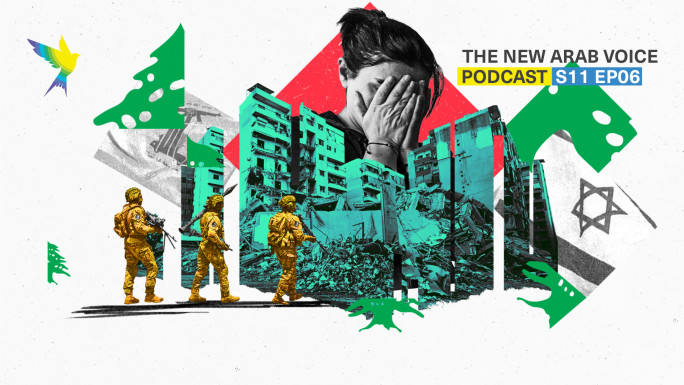
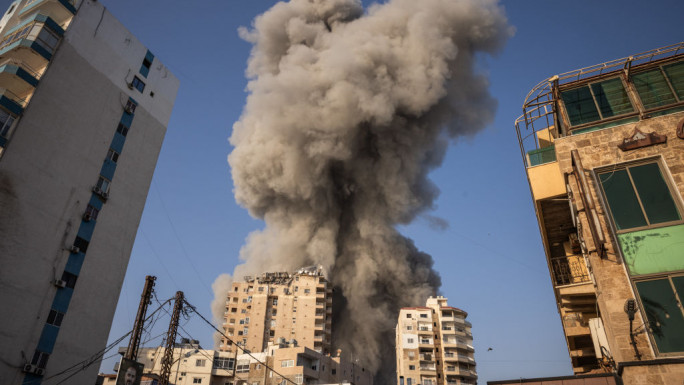
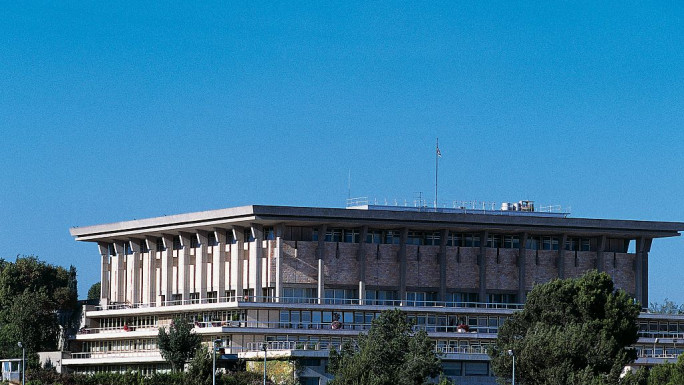
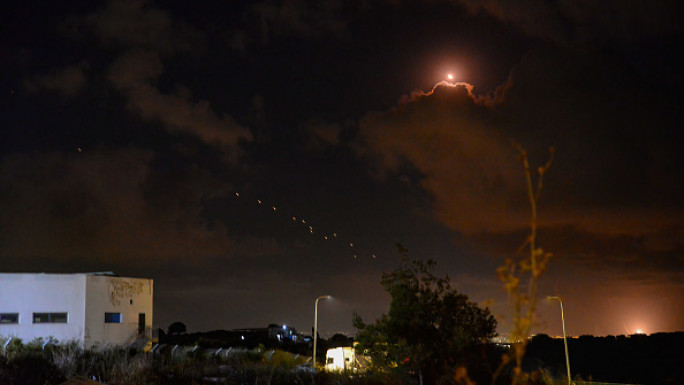
 Follow the Middle East's top stories in English at The New Arab on Google News
Follow the Middle East's top stories in English at The New Arab on Google News
